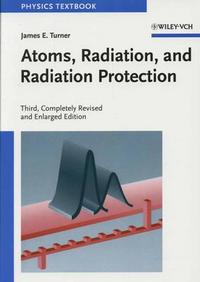
Radiation interactions: interaction of light and heavy charged particles and electromagnetic radiations with matter.
Counting statistics: Binomial, Poisson and Gaussian distributions, error propagation.
General properties of radiation detectors: Detector operation modes, pule height distributions, detector resolution, detection efficiency and dead time.
Gas detectors: Ionization chamber, proportional counter, Geiger Mueller detector.
Scintillation detectors: Organic (plastic and liquid) and inorganic scintillators. Semiconductor detectors: Diffused junction, surface barrier, ion implantation detectors, Si(Li) and HPGe detectors.
Applications: Radio-gaging and radio-tracer applications, radiation and radioisotopes in medical, industry, agriculture, etc.
 Introductory Nuclear Physics
by
Introductory Nuclear Physics
by
 Atomic Physics modern physics
by
Atomic Physics modern physics
by

 Introductory quantum mechanics
by
Introductory quantum mechanics
by
 Nuclear physics principles and applications
by
Nuclear physics principles and applications
by
 Atoms, Radiation, and Radiation Protection
by
Atoms, Radiation, and Radiation Protection
by





